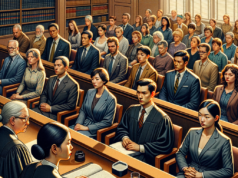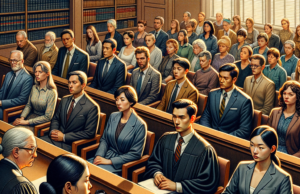The American criminal justice system, once heralded as a beacon of law and order, is now facing unprecedented scrutiny. With rising concerns about systemic inequalities, overcrowding, and the efficacy of punitive measures, the urgent need for reform has never been more apparent. This article delves into the current state of the criminal justice system, highlighting key statistics, the impact on marginalized communities, the consequences of overcrowding, proposed solutions, and the crucial role of public awareness and advocacy in driving meaningful change.
Understanding the Current State of the Criminal Justice System in America
The criminal justice system in America is a complex web of law enforcement, judicial proceedings, and correctional facilities that collectively aim to maintain public safety and uphold justice. However, this system is marred by significant challenges, including high incarceration rates, racial disparities, and a punitive approach that often prioritizes punishment over rehabilitation. As of 2023, the United States holds approximately 2.3 million individuals in prisons and jails, a staggering figure that represents the highest incarceration rate in the world. This reality raises critical questions about the effectiveness of current practices and the underlying principles that guide the system.
Key Statistics Highlighting the Need for Reform in Criminal Justice Practices
Statistics reveal a troubling picture of the American criminal justice landscape. According to the Bureau of Justice Statistics, nearly 70 million Americans have a criminal record, which significantly hinders their ability to secure employment, housing, and education. Furthermore, African Americans are incarcerated at more than five times the rate of white Americans, underscoring the racial disparities that pervade the system. Additionally, the Vera Institute of Justice reports that nearly 80% of individuals in local jails are awaiting trial, often due to an inability to pay bail. These figures not only highlight the urgent need for reform but also call into question the fairness and efficacy of a system that disproportionately affects marginalized communities.
The Impact of Systemic Inequalities on Marginalized Communities
Systemic inequalities within the criminal justice system have far-reaching consequences for marginalized communities, particularly for people of color, low-income individuals, and those with mental health issues. These groups often face over-policing, harsher sentencing, and limited access to legal representation, resulting in a cycle of poverty and incarceration. The stigma associated with a criminal record further exacerbates these challenges, making it difficult for individuals to reintegrate into society after serving their sentences. The cumulative effect of these disparities not only undermines the principle of equal justice under the law but also perpetuates a cycle of disadvantage that is difficult to break.
Analyzing the Consequences of Overcrowding in Prisons and Jails
Overcrowding in prisons and jails is a pressing issue that exacerbates the challenges faced by the criminal justice system. As facilities operate beyond capacity, the quality of life for incarcerated individuals deteriorates, leading to increased violence, mental health crises, and inadequate access to healthcare. The National Institute of Corrections reports that overcrowding contributes to higher recidivism rates, as individuals are released without the necessary support systems in place for successful reintegration. Moreover, overcrowding strains resources, forcing correctional facilities to prioritize punitive measures over rehabilitation, ultimately undermining the goal of reducing crime and promoting public safety.
Proposed Solutions: Strategies for Effective Criminal Justice Reform
Addressing the myriad challenges facing the criminal justice system requires a multifaceted approach to reform. Key strategies include implementing restorative justice practices that focus on rehabilitation rather than punishment, decriminalizing certain offenses, and investing in mental health and substance abuse treatment programs. Additionally, reforming bail practices to eliminate cash bail and promoting alternatives to incarceration, such as community service and probation, can significantly reduce the number of individuals held in pretrial detention. Policymakers must also prioritize the elimination of racial disparities through targeted training for law enforcement and judicial personnel, as well as the establishment of oversight committees to monitor progress.
The Role of Public Awareness and Advocacy in Driving Change
Public awareness and advocacy play a crucial role in driving criminal justice reform. Grassroots movements, nonprofit organizations, and community leaders are instrumental in raising awareness about the systemic issues within the criminal justice system and advocating for change. Social media campaigns and public demonstrations have mobilized citizens to demand accountability and transparency from law enforcement agencies and policymakers. Furthermore, educational initiatives aimed at informing the public about the realities of incarceration and the impact of systemic inequalities can foster a more informed electorate that supports reform efforts. As public sentiment shifts towards a more equitable and rehabilitative approach to justice, the potential for meaningful change becomes increasingly attainable.
The urgent need for criminal justice reform in America is underscored by a myriad of challenges, including systemic inequalities, overcrowding, and a punitive approach that often fails to rehabilitate. By understanding the current state of the system and advocating for comprehensive reforms, society can work towards a more just and equitable future. The path to reform is fraught with obstacles, but with increased public awareness and advocacy, there is hope for a criminal justice system that truly embodies the principles of fairness, rehabilitation, and justice for all.






























